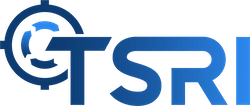René Wagner
TSRI & Salient’s Work with HUD is the “Playbook” for Future Government Modernization

Fueled by the pandemic, software modernization for government agencies has been deemed a high priority with funds allocated to support government entities in their efforts.
Maria Roat, the Deputy Federal Chief Information Officer of the U.S. Office of Management and Budget, was quoted in a Federal News Network article this week about the long-term benefits of modernization work done by TSRI and Salient.
As the article stated:
“HUD mainframe modernization, there’s a playbook coming out of that. So other agencies, they’re going through their mainframe modernization, they can take lessons learned from HUD and apply that,” [Roat] said. “As we as we look to scale and accelerate the board, there’s a lot of things that we’ve already done over the last three years, as we’ve matured, that we can apply to the future funding.”
The maturity that Roat talks about has soared during the pandemic when all of the non-IT leaders realized the importance of online services, applications and systems.
Roat said the TMF is not a CIO program—it’s for CXOs who want to “drive the success of the program.”
TSRI is proud to have been a key partner in this project, and we look forward to helping more government agencies bring their applications into the modern age!
----
TSRI is Here for You
As a leading provider of software modernization services, TSRI enables technology readiness for the cloud and other modern architecture environments. We bring software applications into the future quickly, accurately, and efficiently with low risk and minimal business disruption, accomplishing in months what would otherwise take years.
Get started on your modernization journey today!
Ada to C++ - US Navy - Modem Control Software
TSRI was engaged to modernize US Navy SATCOM Multi-band Terminal (NMT) Modem Control System (MCS) from Ada to C++. To provide SPAWAR with the best modernization approach, Raytheon selected TSRI to transform the existing MCS Ada code into C++ and to re-factor
the C++ toward the desired target architecture. TSRI's fixed-price "integrator ready" deliverable was selected by Raytheon for its low technical risk,
shortened schedule, and low cost.
- Customer & Integrator: US Navy & Raytheon
- Source & Target Language: Ada to C++
- Lines of Code: 190,000
- Duration: 5 months
- Services: Automated Code Transformation, Application Blueprint®, Transformation Blueprint®, Engineering Support, Automated Refactoring
Press Release: TSRI Achieves AWS Mainframe Migration Competency Status
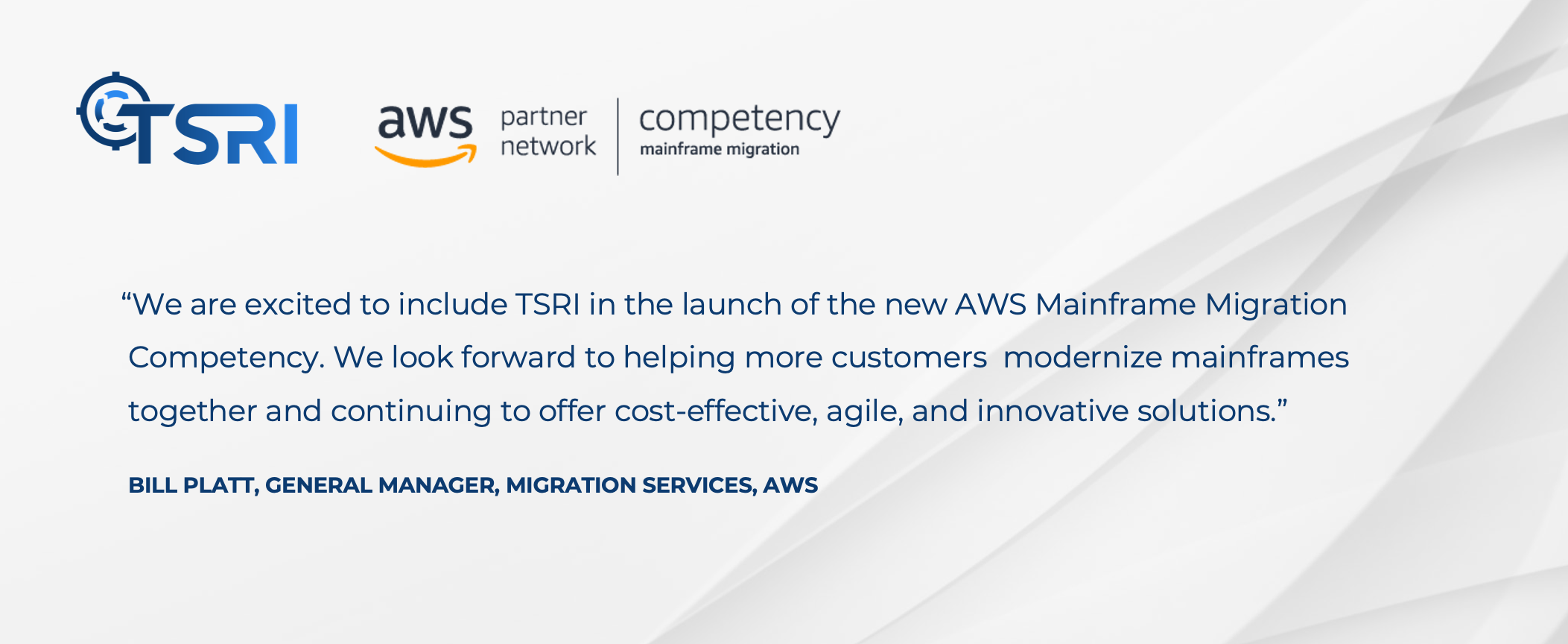
KIRKLAND, Wash., April 05, 2021 (GLOBE NEWSWIRE) -- The Software Revolution Inc. (TSRI) announced today that it has achieved Amazon Web Services (AWS) Mainframe Migration Competency status. This designation recognizes that TSRI has proven solutions, practices, and customer success in migrating both mainframe applications and data to AWS.
Recognizing the complexity of a mainframe migration, AWS customers seek proven methodologies, tools, and best practices to empower successful migrations. The AWS Partner Network (APN) plays a critical role in these efforts by providing access to mature technology products and services for customers’ mainframe migrations from AWS Partners with proven solutions and expertise.
AWS launched the AWS Mainframe Migration Competency to help customers confidently identify and engage AWS Partners who specialize in mainframe migration. These AWS Partners are vetted, validated, and verified against a high bar to achieve the AWS Mainframe Migration Competency. The high bar validates and verifies that AWS Partners with AWS Mainframe Migration Competency status offer mature solutions and practices and repeatable mainframe migration success.
Achieving the AWS Mainframe Migration Competency status differentiates TSRI as an AWS Partner with a track record of success and deep domain expertise in mainframe workloads migration.
“With this announcement, AWS puts a stake in the ground that modernization is vital to the health and security of governments and companies worldwide. The AWS Competency program encourages higher standards and better access for organizations looking to usefully leverage cloud technologies for their clients,” said Nicolas Newcomb, President of TSRI. “TSRI is honored to achieve AWS Mainframe Migration Competency status. We look forward to supporting successful modernization journeys for more organizations than ever before.”
TSRI enables technology readiness for the cloud and other modern architecture environments quickly, accurately, and efficiently with low risk and minimal business disruption. Their model-driven methods use 99.9X% automation to modernize and migrate mainframe applications, databases, and user interfaces into multi-tier, cloud-enabled architectures. TSRI’s iterative refactoring process repairs dead code and eliminates dead ends while their automated documentation engine enables today’s developers to more completely understand their system architectures.
“TSRI differentiates itself through experience and the speed and accuracy with which they transform legacy code,” said Sumeet Shrivastava, CEO of TSRI’s integration partner Array Information Technology. “Having a reliable partner like TSRI allows the Array team to do what we do best – develop upon the foundation of the transformed code toward wider reaching client objectives.”
Systems integrator NTT DATA partnered with TSRI to modernize a 50-year-old logistics system for the U.S. Air Force. “The United States Air Force required system modernization with no loss in functionality, no loss of performance, and adherence to price and schedule,” said Paul Saladna, Associate Director and Enterprise Architect at NTT DATA. “Throughout the project, TSRI proved to be an optimal partner who delivered on-time, on-budget, and to spec. They made the modernization process easy from start to finish.”
View the case study to learn more about how the U.S. Air Force modernized their technology with TSRI for AWS deployment.
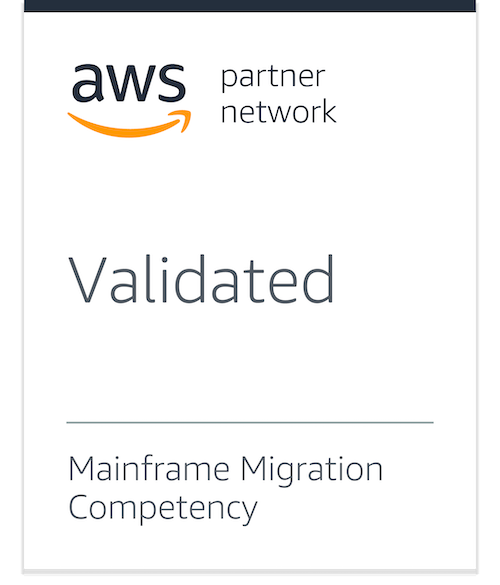 “Now more than ever, businesses are looking to migrate and modernize their mainframes with AWS. To help customers make the right choices when finding the most qualified AWS Partner for the job, we’ve created the new AWS Mainframe Migration Competency for customers to easily identify expert AWS Partners with repeatable mainframe migration success,” said Bill Platt, General Manager, Migration Services, AWS. “These AWS Partners are vetted by AWS for their mature solutions with proven customer migration success, and we are excited to include TSRI in the launch of the new AWS Mainframe Migration Competency. We look forward to helping more customers modernize mainframes together and continuing to offer cost-effective, agile, and innovative solutions.”
“Now more than ever, businesses are looking to migrate and modernize their mainframes with AWS. To help customers make the right choices when finding the most qualified AWS Partner for the job, we’ve created the new AWS Mainframe Migration Competency for customers to easily identify expert AWS Partners with repeatable mainframe migration success,” said Bill Platt, General Manager, Migration Services, AWS. “These AWS Partners are vetted by AWS for their mature solutions with proven customer migration success, and we are excited to include TSRI in the launch of the new AWS Mainframe Migration Competency. We look forward to helping more customers modernize mainframes together and continuing to offer cost-effective, agile, and innovative solutions.”
Learn more about TSRI’s approach to modernizing mainframe technology for AWS.
AWS is enabling scalable flexible and cost-effective solutions from startups to global enterprises. To support the seamless integration and deployment of these solutions, AWS established the AWS Competency Program to help customers identify AWS Partners with deep industry experience and expertise.
For more information about TSRI’s technologies and the benefits of cloud migration, or to begin your organization’s modernization journey, visit www.tsri.com.
About TSRI
TSRI – Software Modernization Assured
As a leading provider of fully automated software modernization services, TSRI enables technology readiness for the cloud and other modern architecture environments. We bring software applications into the future quickly, accurately, and efficiently with low risk and minimal business disruption, accomplishing in months what would otherwise take years.
View TSRI’s software transformation case studies, or contact us to start your modernization journey today.
Contact:
Greg Tadlock
This email address is being protected from spambots. You need JavaScript enabled to view it.
+1 (425) 284-2782
AWS Features TSRI as a Validated Partner for Mainframe Migration
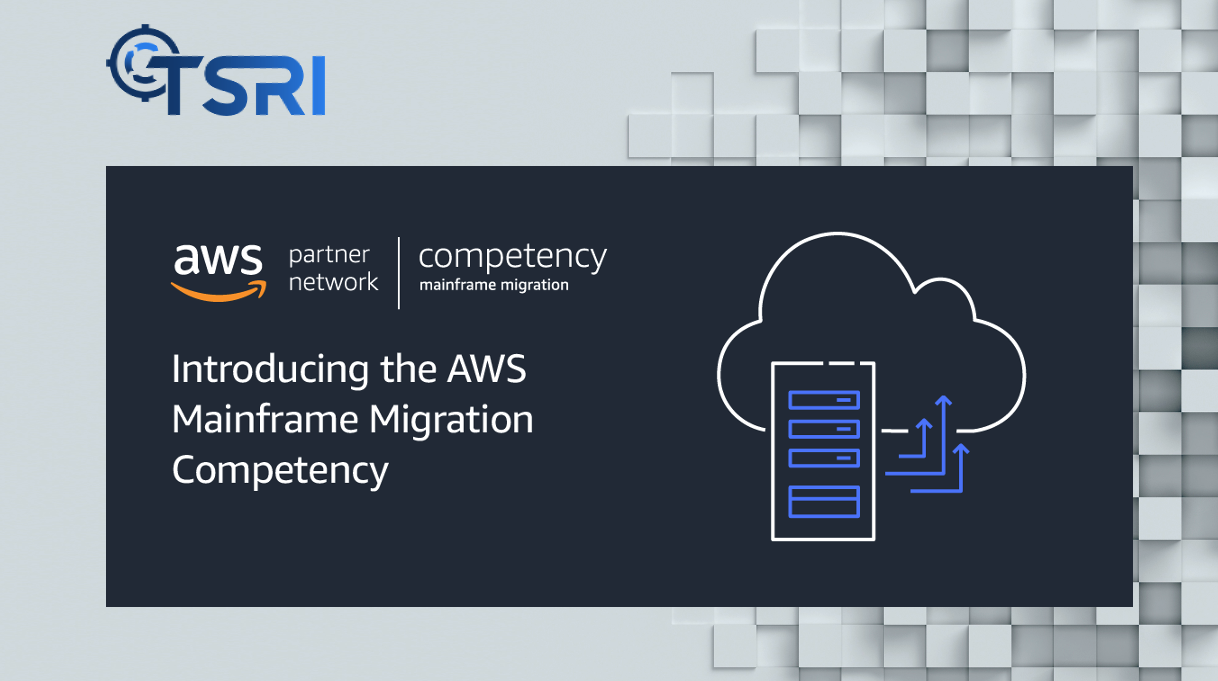
When companies and governments need to migrate their mission-critical applications to the cloud, they will need a partner to make that transformation as smooth and efficient as possible. And when it comes to modernization, a highly automated process will get them cloud-ready quickly and accurately. TSRI is here to help organizations begin their modernization journey, and we are honored to be named as a Validated Partner in Amazon Web Services’ new Mainframe Migration Competency!
The AWS Competency Program is designed to identify, validate, and promote AWS Partners with demonstrated technical expertise and proven customer success.
The Competency designation helps AWS Partners differentiate their business to customers by showcasing their products and services in specialized areas across industries, use cases, and workloads. AWS Partners are vetted, validated, and verified against a high bar to achieve the AWS Competency designation.
TSRI joins an elite group of integrators and technical specialists in this competency. With more than 25 years of experience and leadership in modernization across multiple platforms and languages, we are perfectly positioned to help organizations with legacy architectures migrate to the cutting edge.
-----
TSRI is Here for You
As a leading provider of software modernization services, TSRI enables technology readiness for the cloud and other modern architecture environments. We bring software applications into the future quickly, accurately, and efficiently with low risk and minimal business disruption, accomplishing in months what would otherwise take years.
Get started on your modernization journey today!
Microservices Offer Robustness and Security in Modern Systems
Microservices: The Architecture that Runs the Cloud
In past decades, software applications for organizations and enterprises were built as single systems designed to fulfill multiple business needs. These applications are often referred to as monolithic due to their enormous size and cumbersome nature. In a monolithic structure, all functionalities rely upon one another, making them very difficult to update or maintain—making changes in one area can create unknown failures in others. Additionally, maintenance and upgrades can be a very heavy burden not just for the system administrators, but for the business as a whole. Entire areas within the organization are often offline for hours or even days as administrators hold their breath to make sure the new/upgraded applications don’t break something else.
 One of the most important architectural advances since the rise of cloud computing is microservices. Though not necessarily tiny in size, microservices offer an alternative by breaking down monolithic applications into multiple, single-purpose services that interoperate with—rather than depend on—each other. These decoupled services are highly flexible, scalable, reliable, and can run simultaneously across multiple applications.
One of the most important architectural advances since the rise of cloud computing is microservices. Though not necessarily tiny in size, microservices offer an alternative by breaking down monolithic applications into multiple, single-purpose services that interoperate with—rather than depend on—each other. These decoupled services are highly flexible, scalable, reliable, and can run simultaneously across multiple applications.
Microservices also make processes more efficient. They have the ability to communicate with one another to make a complete system and enable teams to use agile software development practices to deliver constant, ongoing software releases rather than forcing administrators to rely on single time-intensive upgrades.
From a business perspective, microservices can fulfill customer and employee requirements on an as-needed basis to provide new services and functionality. Their efficiency often means faster time to market on new products and services, and since they can be developed independently, organizations experience reduced risk with minimal business disruption.
Preparing to Move to a Microservices Environment
When considering modernizing monolithic applications and making the move to a cloud-based microservice architecture, you must first assess, tune, and optimize your applications for a successful effort. Consider these items when preparing for a modernization of your legacy mainframe systems to bring them up to par with today’s architectures and languages:
- Know your systems.
- In order to successfully modernize, understanding your existing systems is key. Obtain documentation and a detailed blueprint of your current architecture.
- Assess the appropriate target language.
- Microservices can be written in many different modern computing languages. Your business and operational needs can help drive this decision.
- Understand your data model.
How will your data interact with the microservices you build or employ, and how do you ensure that you do the appropriate due diligence to protect your own data as well as your customers’?
- Decide on cloud vs. on-premises (private cloud) deployment.
While cloud infrastructure becomes more secure by the day, if your systems are highly classified or include sensitive personal information, you may want to modernize to a private cloud that still allows you to employ microservices.
- Additional considerations – automation and refactoring.
While there are many different approaches to software modernization, the most accurate, efficient, and cost-effective option is a fully automated solution. Automation provides significant advantages over manual enhancements, not the least of which is a huge reduction in risk due to the introduction of human error to the modernized application.
A fully automated modernization includes a key component known as architectural refactoring. With refactoring, the application is re-engineered to improve the modernized system’s architecture, user interface, and maintainability. This iterative process also includes the removal of dead and redundant code while improving the quality and effectiveness through each pass. The refactoring process retains the functional equivalency of the original application while making the system more flexible, microservice compatible, and ready for cloud deployment.
Getting Across the Finish Line to Microservices and the Cloud
Modernizing your monolithic applications to microservices and the cloud is no easy feat. It will take a team of experts to not only focus on the tactical modernization of the software, but also work closely with you to put your organization on the path to success. This means working to understand your existing architecture with an assessment and documentation, developing a roadmap to your target language and architecture, and finally, getting you across the finish line with a fully modernized and improved application that’s ready for microservices and the cloud. This start-to-finish partner will be an invaluable ally in your efforts.
------
TSRI is Here for You
As a leading provider of software modernization services, TSRI enables technology readiness for the cloud and other modern architecture environments. We bring software applications into the future quickly, accurately, and efficiently with low risk and minimal business disruption, accomplishing in months what would otherwise take years.
Press Release: TSRI Celebrates 25 Years and Expands Modernization Offerings
KIRKLAND, WA – March 16, 2021 (GLOBE NEWSWIRE) — The Software Revolution, Inc. (TSRI), a recognized leader in fully automated software modernization, marks its 25th anniversary with new partnerships and solutions to meet an urgent need for the modernization of enterprise-scale applications. As organizations face diminishing resources, technical vulnerabilities, and rising costs, TSRI enables the rapid, low-risk modernization of systems that are critical to our society’s infrastructure. TSRI has demonstrated success in the military, government, and commercial sectors while delivering a full, end-to-end solution ready for cloud architectures and continuous DevSecOps maintenance and development.
Since the 1990s, TSRI has helped organizations migrate their systems into fully modern environments, databases, and languages. Its core technology, JANUS Studio®, is a model- and architecture-driven technology suite for automatic software modernization. Now in its third generation, JANUS Studio® is an advanced framework for automated assessment, documentation, transformation, and refactoring, tied in with DevSecOps processes. TSRI modernizes where engineering teams need help the most: languages such as COBOL, PL/1, JCL, Java, C#, MUMPS, Fortran, and Ada, as well as over 35 other supported languages, databases, and user interfaces. The sophistication and versatility of the model-based approach allows TSRI to modernize applications at an enterprise scale.

“Just as the Industrial Revolution took decades to transform 19th-century society and industry, TSRI is systematically applying formal methods and artificial intelligence to continuously transform and evolve software,” Philip Newcomb, Founder, Executive Chairman, and CTO of TSRI said. “JANUS Studio® is an industrial-scale technology for highly efficient and accurate analysis and transformation of code on a vast scale. Today, with the infrastructure of our society based on software, the need to expeditiously and reliably modernize these systems is more urgent than ever. Our approach is focused on providing semantic code transformation, which has enabled us to perform rapid, low-risk automated modernization for organizations who would have otherwise been left behind.”
Client Success Story
When NTT DATA was asked to modernize the United States Air Force’s (USAF) 50-year-old legacy mainframe Integrated Logistics Systems-Supply (ILS-S) Standard Base Supply Systems (SBSS), they queried leading software modernization vendors to assist, including TSRI. USAF wanted to reduce operating costs, improve system agility, and enable full mission readiness of its bases around the world. TSRI was chosen to help NTT DATA meet the USAF’s tight-turn and proof-of-concept trial.
“For this program, the United States Air Force required system modernization with no loss in functionality, no loss of performance, and adherence to price and schedule,” Paul Saladna, Associate Director and Enterprise Architect at NTT DATA said. “Throughout the project, TSRI proved to be an optimal partner who delivered on-time, on-budget, and to spec. They made the modernization process easy from start to finish.”

The result of NTT DATA’s successful effort, with TSRI’s assistance, is a fully modernized Java system deployed in the AWS GovCloud on over 260 U.S. Air Force bases around the world, saving the client CAPEX and OPEX costs, while allowing them to remain agile to business and program needs.
Looking Ahead
TSRI was recently named as a launch partner for Amazon Web Services’ Mainframe Migration Competency. In late 2020, the company launched DocsRev™, a code-level-based “Documentation-as-a-Service” product that enables organizations to easily take advantage of JANUS Studio’s® documentation while reducing operational and maintenance costs. In addition, TSRI is expanding its product and services, driving toward a fully integrated, continuous cloud modernization offering with DevSecOps functionality. This framework establishes a “modernization permanence” model, with on-going support required for continuous code and security deployment.
About TSRI
TSRI – Software Modernization Assured
As a leading provider of fully automated software modernization services, TSRI enables technology readiness for the cloud and other modern architecture environments. We bring software applications into the future quickly, accurately, and efficiently with low risk and minimal business disruption, accomplishing in months what would otherwise take years.
Media Inquiries:
Rebecca MacLeod
This email address is being protected from spambots. You need JavaScript enabled to view it.
+1 (206) 852-7403
Business Inquiries:
Greg Tadlock
This email address is being protected from spambots. You need JavaScript enabled to view it.
+1 (425) 284-2782
AWS Names TSRI as a Launch Partner for Mainframe Migration
At AWS re:Invent 2020, Amazon Web Services (AWS) unveiled plans for a new “Mainframe Migration Competency” and announced that TSRI has been identified as a launch partner! AWS recognized that TSRI’s solution — which provides near-100% automation and cloud-specific refactoring — are a huge benefit for organizations seeking reliable, low-risk, and rapid migration to the cloud. Furthermore, TSRI’s proven track record, which includes hundreds of successful modernization projects over more than 25 years, meant that TSRI would be a reliable and knowledgeable technology partner for AWS customers.
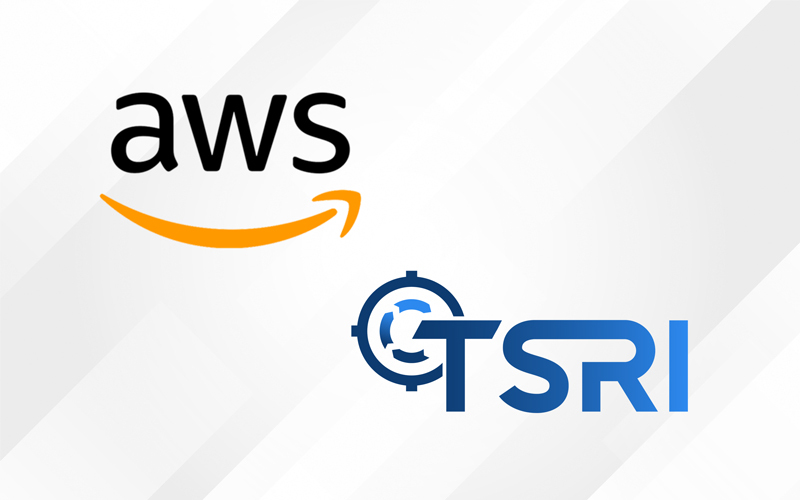 From AWS:
From AWS:
“Recognizing the complexity of a mainframe migration, our customers seek proven methodologies, tools, and best practices to empower successful migrations. The AWS Partner Network (APN) plays a critical role in these efforts by providing proven technology products and services for customers’ mainframe migrations.”
TSRI’s model-based solution transforms even very large (tens of millions of lines of code) legacy systems written in languages like COBOL, Fortran, PowerBuilder, Ada, MUMPS, VB6, and more than 30 other languages, into modern applications in cloud-native target architectures. The output is a modern multi-tier application that takes advantage of cloud utilities and scalability.
Now is the time to modernize for the cloud. According to AWS, “more than 70 percent of the Fortune 500 companies still run business-critical applications on mainframes, and many companies and institutions still possess legacy mainframes in their data centers. As a result of constantly evolving customer needs, the demand for modernization has accelerated as companies require increased agility to meet those needs.
“Due to the slow development cycle of mainframes, more companies are migrating to the cloud to enable rapid development and innovation. Furthermore, as mainframe subject matter experts retire and leave the workforce, these companies face an increasing skills gap.
“Coupled with high upgrade and development costs and expensive usage fees, CIOs with mainframes they must maintain are well aware of the business risks to their enterprise. As a result, a growing number of companies are looking to modernize and migrate their mainframe workloads to Amazon Web Services. These migrations enable companies to realize business benefits like an average 70 percent savings in IT infrastructure costs.”
See the AWS blog for more.
We’re excited to start the modernization journey with any organization looking to get off their mainframe and on to AWS! Learn more about how TSRI can help you transform your technology quickly and seamlessly, ensuring you and your application users can make the most of what cloud technologies have to offer.
-------
TSRI is Here for You
As a leading provider of software modernization services, TSRI enables technology readiness for the cloud and other modern architecture environments. We bring software applications into the future quickly, accurately, and efficiently with low risk and minimal business disruption, accomplishing in months what would otherwise take years.
Get started on your modernization journey today!
The Business Case for Automated Modernization
Perhaps you’ve seen your competition pull ahead. Maybe your customers have become frustrated with their experience as they interact with your systems. Possibly, you’ve even experienced a security breach. You know your legacy systems need to move into the 21st century, and perhaps you’re struggling to decide how to move forward. Whether you want to face it or not, now is the time to take a hard look at modernizing your digital infrastructure.
 According to salesforce.com, “while there may be a multitude of reasons for a business to undergo digital transformation, it mostly boils down to survival. Digital transformation can be risky and expensive, so it’s often a necessity for businesses that want to survive and outlast the ones that failed to evolve.”
According to salesforce.com, “while there may be a multitude of reasons for a business to undergo digital transformation, it mostly boils down to survival. Digital transformation can be risky and expensive, so it’s often a necessity for businesses that want to survive and outlast the ones that failed to evolve.”
And then there’s the expense: Daniel Newman at The Future of Work suggests that as much as 80 percent of an IT budget can be spent on maintenance. Modernizing legacy systems—even incrementally—can help a company see its capabilities leap forward by using the cloud to integrate automation into standard business processes. John Brandon at techradar.com suggests that “some of the most disruptive technologies—such as machine learning, voice bots like Amazon Alexa, and artificial intelligence—are helping to automate mundane tasks and improve how a business runs.”
These technologies run on data. In this new era of computing, the businesses that truly succeed will be the ones that put an emphasis on their data. If they haven’t already, legacy systems with limitations on their data will fall behind, especially when introducing machine learning and AI into the mix. At the same time, the data and infrastructure that have kept older systems going for so long can’t just be switched off, and freezing the systems as teams write and develop its replacement will push customers away.
Modernization effectively overcomes these risks to your organization by opening up the possibilities that an older codebase wasn't designed to handle.
“Taking inventory of what still works and what doesn’t allows companies to identify which processes are no longer relevant,” writes Newman. “Only applications deemed critical to business are then modernized; the others are simply retired, saving time and money on maintenance.”
When you decide to replace or reconfigure your legacy system, you can decide between any of these modernization options:
New Application Development. Replicate your legacy system by writing entirely new code. Your team will manually develop your new system using current coding practices with modern interfaces, and support for current technologies. This option is very expensive option, and it’s generally only usable to set a baseline for future development. You’ll incur expenses that can be as high as the original project, risk levels are similar to a typical “waterfall” project, and there are high likelihoods of time and budget overruns.
Extend/Surround. Many organizations currently opt for this method. The development teams or consultants encapsulate the legacy system in coding containers that provide APIs and tack-on integration with other systems. While the solution may work, you will have a patchwork of code, often in multiple programming languages, that gradually increases technical debt and incurs added maintenance costs. While this situation defers replacement, it will likely be costly in the long run.
COTS/SaaS. Both common off-the-shelf (COTS) solutions or cloud-based SaaS systems enable you to migrate to a less expensive and more modern architecture, but costs can easily escalate. The new system will require customization and ongoing licensing costs. Such a migration could create ripple effects on other systems and cause you to incur other costs from conforming to a completely new platform with unknown attributes.
Automated Modernization. A careful translation of code by a team of expert external engineers creates a new, modern application based upon the logic and behavior of the original. The process will include varying degrees of automation, which increases accuracy while decreasing costs. Modernization will likely incur the least risk and expense of any of these options.
Replacement of aging systems is becoming increasingly urgent, and as programmers of many of these older systems retire, replacement costs will continue to rise. An automated modernization program will likely yield the least expensive and most flexible alternative for stable, long-term performance.
-----
TSRI is Here for You
As a leading provider of software modernization services, TSRI enables technology readiness for the cloud and other modern architecture environments. We bring software applications into the future quickly, accurately, and efficiently with low risk and minimal business disruption, accomplishing in months what would otherwise take years.
Get started on your modernization journey today!
Standish Group, “Modernization: Clearing a Pathway to Success,” 2010
A Refreshed Brand Foundation to Align with an Expanded Mission
New tagline: Software Modernization Assured
New mission statement: Through technical ingenuity, dedication, and collaboration, we automate the modernization of high-value software, advancing organizations into a better business and technology reality.
New vision statement: Creating a world where organizations aren’t limited by technology.
As we mark our 25th anniversary, the TSRI you see today is a fresh, renewed TSRI. As we embarked upon the celebration of this milestone, we realized that our brand deserved to catch up to the advances the company has made in technology, delivery, and that we needed to better capture a track record of success and client-focus that our team is proud of. For a company that specializes in assuring software modernizations, it was time for form to reflect function.
TSRI’s mission has evolved. While we are known as a company that provides efficient and effective technology modernization, we needed to better communicate that our capabilities, while applicable to the modernization and refactoring of a broad array of legacy computer languages, are matched by our investment in the holistic guidance of our clients through their modernization journey and beyond.
We began with questions. Lots of questions. True to TSRI’s culture, we established our new brand as a team effort. We knew, all the way across the company, who we’ve been and how we show up for our clients: Precise. Dependable. Innovative. Collaborative. Experienced. Proven. But we also wanted our refreshed brand to take us forward. The logo, the colors, the design of our website, the printed materials we distribute… every place we make an impression we put on the table.
Understanding What Our Clients Value!
Our first step was to understand not only our unique brand personality and brand promise, but also to understand our clients. We undertook an exercise that forced us to dig deep—into the culture, how we feel we represent ourselves to our clients, and how we want to show the best of our expanded, collaborative end-to-end services. We explored multiple visualizations to convey the key pillars we knew would describe the evolution of TSRI.
Once we’d established our pillars, we explored what that personality would look like, starting with our new logo.
The Logo
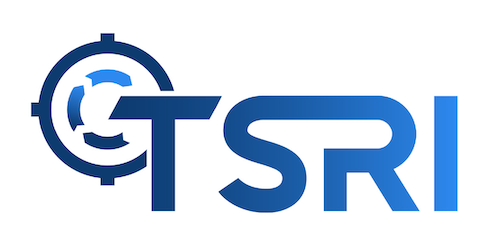
TSRI’s previous logo made a statement: the classic red-black target was intended to imply precision and accuracy, which we do in fact prioritize, in the outcomes of transformations. However, it also confused some people about the mission of our company. We still wanted to maintain that idea of precision while remaining close to our roots. The brand mark, or icon, that was developed, as well as the abstracted moving reticle on our homepage, tells that story. The circular arrows inside the reticle show the forward-moving, iterative processes that make our modernization and refactoring projects highly successful while invoking the limitless horizons a modern codebase can open for our clients. Our clients trust us to think outside of the box as we partner with them to modernize, and they can trust that we will stick around to keep modernizing and support them in the evolution of their systems.
The TSRI word mark itself evokes that feeling of openness while the connected ‘S’ and ‘R’ feels almost space age—definitely futuristic!
Our palette
The two shades of blue that anchor our logo are TSRI's new primary colors.
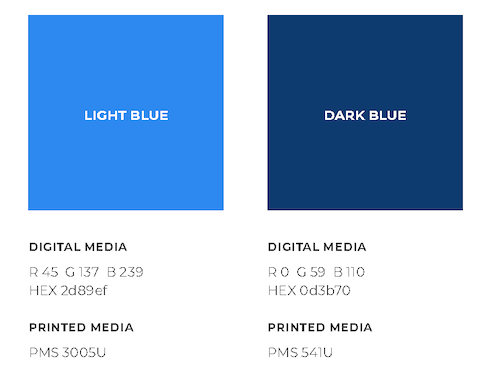
To us, the navy blue feels like professionalism, steadiness, and establishment. We paired that dark blue with a lighter sky blue to reflect the expansive ideas and experience our technical team and collaborators bring to each and every project.

For our secondary colors, we landed on two lighter grays. These underscore the gravity of the systems we modernize. The soft black, clear and simple, represents accessibility to our clients.
Type
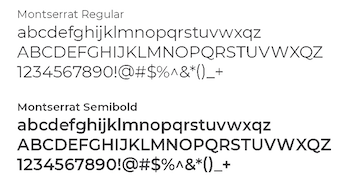
The typeface we chose to represent TSRI’s brand, Montserrat, is modern, refreshing, clean, inviting, and bold — we feel it represents our confidence in our own evolution and dedication to developing technologies and services in the service of our mission.
The Wider Angle
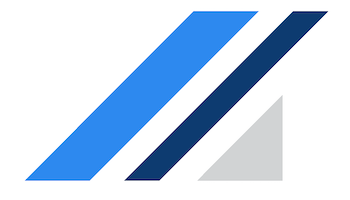
Colors, type, and logos can show off the brand, but more subtle cues guide its implementation. These include the angled lines that show our innovation, our forward thinking, and how we move our clients into the future. We use photos with more of an abstract feel that tell the story of how our products provide precise results, which are inherently designed to help keep project risk at a minimum.

Pulling it All Together
All told, the process of reimagining the TSRI brand took just under three months. While we knew we would end up with a tone and voice that would tell the story of TSRI’s end-to-end capabilities, we were so gratified to have everyone aboard to guide us toward the bold, forward-thinking statement that sets us on the path of our next 25 years.
TSRI is a team that can move you forward, and we feel as though our visual brand now conveys that more accurately. We are dedicated to helping you carry your critical software applications into the future. We are “software modernization assured.”
-----
TSRI is Here for You
As a leading provider of software modernization services, TSRI enables technology readiness for the cloud and other modern architecture environments. We bring software applications into the future quickly, accurately, and efficiently with low risk and minimal business disruption, accomplishing in months what would otherwise take years.
Mainframe Modernization Brings Agility, Security, and Peace of Mind
Mainframes are big. Mainframes are powerful. Mainframes continue to run an enormous number of critical applications. Even as today’s enterprise infrastructures gravitate toward the cloud and newer languages, according to Allied Market Research, the market for mainframes will continue to grow through at least 2025 and legacy languages such as COBOL are still in wide use. The actual amount of processing performed by mainframes continues to grow steadily each year as a result of increasing demands, more users, and new applications reliant upon data stored on mainframes.
Modernize Now, Plan for the Future
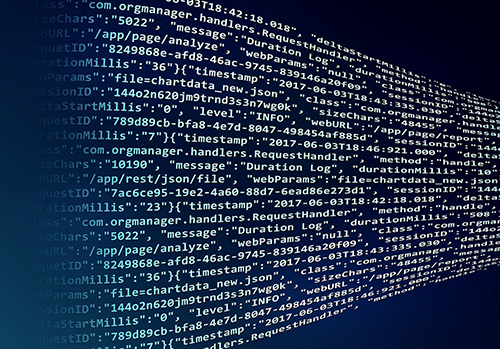 While the capacity and processing power of a mainframe remains attractive to enterprise companies and governments alike, there are drawbacks: when it comes to agility, mainframes cannot quickly adjust to the needs of a business. They cannot quickly scale to meet extraordinary events. It’s difficult to integrate business-intelligence tools for non-engineers to easily access the data they need. Mainframes often don’t have the automated security tools to mitigate a security breach before it causes extensive damage.
While the capacity and processing power of a mainframe remains attractive to enterprise companies and governments alike, there are drawbacks: when it comes to agility, mainframes cannot quickly adjust to the needs of a business. They cannot quickly scale to meet extraordinary events. It’s difficult to integrate business-intelligence tools for non-engineers to easily access the data they need. Mainframes often don’t have the automated security tools to mitigate a security breach before it causes extensive damage.
At the same time, as each year passes, more experts that can maintain the older, legacy languages like COBOL and PL/1 are retiring. In the wake of the Covid-19 pandemic, the availability of programmers reached crisis proportions when overtaxed unemployment systems in some U.S. states couldn’t keep up with demand. Most younger software engineers train and work in newer, evolving languages that support web technologies and the cloud.
Still, even as many of these enterprise organizations are strongly considering moving operations and processes to the cloud, such migrations can take years, and they may not abandon their mainframes entirely. But they still need the agility, access, and security of a modern system to remain competitive.
So, what can these organizations do? They can modernize.
A modernization effort is often targeted not only at the mainframe itself, but at older language programs that run these massive machines. These programs, often written in now-archaic languages without consideration for internet connectivity or cloud computing, often need to change to meet the organization’s current needs for accessibility, customer experience, and security compliance. These requirements are universal to modernization efforts of any kind, but not all forms of modernization are adept at meeting all the requirements. The modernization strategy your organization selects needs to consider the resources you have available, your timelines, and what your ideal outcome looks like.
Choosing a Modernization Strategy
Mainframe modernization does not have to mean eliminating the mainframe. Organizations can utilize a number of different modernization strategies that meet different demands at varying cost and risk levels. Some possibilities include:
- Gradual integration: On an as-needed basis, organizations can use automation to modernize older applications through incremental improvement and build new applications on the mainframe that fit into a state-of-the-art computing environment.
- Retire, Retain, Replace, Rehost or Re-envision: An organization will assess legacy applications and systems on an individual basis and decide what should be retained, what can be rewritten, and what should be replaced with a new, modern application that can be hosted in a new environment such as the cloud.
- Lift and shift: Rebuild current mainframe applications on a new platform, then integrate the with mainframe applications and data sources across platforms.
- Automated Transformation: A dedicated team assesses existing applications created in common languages such as COBOL or Fortran, or even less-common languages like PL/1 and MUMPS, then uses automated processes to translate the legacy application to the desired modern language (e.g., Java is a very common target). Organizations can then migrate to an upgraded mainframe or rehost them in the cloud. At the same time, a wider range of programmers can work with the modernized applications and more easily incorporate them into new databases and services.
Each approach varies depending upon business requirements, budget, and modernization schedule. Regardless, before beginning any process, an organization’s business and technical teams need to define their objectives and scope.
Gain Security & Competitive Advantage
Whether your organization is ready to move out of a mainframe environment or not, modernized code provides the security and peace of mind that your critical applications can be maintained and evolved as needed to support the business over time. As the Covid crisis and associated economic pressures have forced businesses of every size to accelerate modernizing their legacy systems, organization leaders have realized they can no longer wait to maintain their security and competitive advantage.
While some organizations may choose to do a wholesale migration, most companies and government agencies will opt to modernize using a more gradual approach. Either way – and whether an organization stays on their mainframe, moves to the cloud, or develops a hybrid solution – a modernization will ensure they can have the digital and human resources to sustain their operations far into the future.
-----
TSRI is Here for You
As a leading provider of software modernization services, TSRI enables technology readiness for the cloud and other modern architecture environments. We bring software applications into the future quickly, accurately, and efficiently with low risk and minimal business disruption, accomplishing in months what would otherwise take years.
